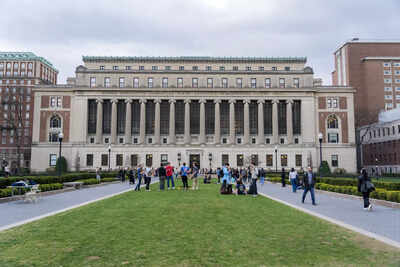ARTICLE AD BOX

FILE - (Hiroko Masuike/The New York Times)
For decades, the United States has stood as a beacon of ambition, a land where talent from every corner of the globe converged to chase dreams that transcended borders. Its universities, research labs, and companies promised not only education but a pathway to professional fulfillment.
Yet, August’s employment data delivers a stark elegy to that promise: Unemployment rising to 4.3%, job losses mounting, and growth slowing to a near halt. For international students, whose futures intertwine with this fragile labour landscape, the American dream is increasingly precarious.
Job creation slows to a crawl
The Bureau of Labor Statistics revealed that only 22,000 new nonfarm jobs were added in August, a sharp slowdown from July’s revised 79,000.
June, once thought to have gained 14,000 jobs, actually saw a net decline of 13,000—the first loss in four and a half years. Analysts cite policy pressures, escalating import tariffs, tighter immigration regulations, and widespread federal layoffs—as major contributors to the stagnation.
International students in the eye of the storm
Students on F-1 and J-1 visas face mounting hurdles. Part-time jobs during studies are shrinking, and post-graduation employment pathways, through Optional Practical Training (OPT) or H-1B visas, are increasingly uncertain.
Technology, finance, and professional service sectors, which historically absorbed international talent, now face layoffs and hiring freezes, complicating visa sponsorship and career planning.
Sectoral shifts and wage realities
Healthcare remained a rare bright spot in August, adding 31,000 jobs, though below its 12-month average. Manufacturing lost positions for the fourth consecutive month, highlighting the impact of tariffs, while federal government payrolls declined by 15,000.
Sectors like wholesale trade, information, and professional services also faced reductions.While average hourly earnings rose 0.3%—mirroring July—the average duration of unemployment extended to 24.5 weeks, underscoring structural challenges. For international students, this reality translates into fewer internships, limited networking, and heightened financial vulnerability.
Economic policy and the path forward
Financial markets now anticipate a Federal Reserve rate cut, which may provide short-term relief.
Yet for global students, rate adjustments offer limited solace. Stricter visa regulations and slower hiring signal a more competitive and uncertain landscape for those navigating work authorization processes.Michael Feroli, chief economist at J.P. Morgan, cautioned, “Private hours worked appear to be contracting at about a 0.5% annual rate this quarter. We remain cautious about growth prospects next quarter.”At a crossroadsThe intersection of rising unemployment, declining job growth, and tightening immigration policies challenges the very premise of the United States as a global hub for talent. International students, once a vital thread in the nation’s innovation and workforce fabric—now confront a landscape of uncertainty. As universities, policymakers, and employers adjust to this new reality, the months ahead may redefine not only American economic growth but also the credibility of the United States as a land of opportunity for the world’s brightest minds.



.png)
.png)
.png)
















 3 days ago
6
3 days ago
6







 English (US) ·
English (US) ·